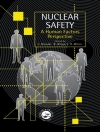The Designing Environments book series addresses questions regarding necessary environmental transformation in the context of the fast-unfolding environmental crisis. This is done from a broad interdisciplinary perspective, examining the negative impact of human transformations of the environment and providing different inroads towards sustainable environmental transformation with net positive impact.
Volume one of the Designing Environments book series brings together experts from different disciplines and often inter- and transdisciplinary contexts, who discuss specific approaches to overcoming the negative impact of the transformation of environments by humans. Across the 12 chapters of volume one, specific keywords recur that are indicative of shared insights and concerns. These include Anthropocene, climate change, complexity, critical zone, ecosystem services, and sustainability. Furthermore, interdisciplinary approaches to human–environment interactions, sustainability transitions, and socio-ecological systems take center stage and are discussed in relation to conceptual and methodological as well as societal and technological challenges and opportunities.
表中的内容
Chapter 1. Introduction to Designing Environments (Prof. Dr. Michael U. Hensel et. al.).- Chapter 2. Anthropocene Risks (Patrick Keyes et. al.).- Chapter 3. Complexity Science Approaches and Paradigms for Sustainability (Dr. Angela Espinosa).- Chapter 4. Knowledge & Data-integrated Approaches for Designing Environments (Dr. Cédric Pruski et. al.).- Chapter 5. Modelling the Anthropocene (Prof. Dr. Ir. Peter H. Verburg).- Chapter 6. Geodesign & Geoinformatics (Prof. Dr. Olaf Schrot).- Chapter 7. Land-use Change Modelling (Prof. Dr. Ir. Peter Verburg).- Chapter 8. Computational Landscape Ecology (Prof. Dr. Ralf Seppelt).- Chapter 9. Urban Metabolism (Prof. Dr. Vanesa Castán Broto).- Chapter 10. Socio-metabolic Transitions (Prof. Mag. Dr. Helmut Haberl).- Chapter 11. Human-Environment Interactions in Urban Systems (Prof. Paola Viganó).- Chapter 12. Climate Change and Cities (Cynthia Rosenzweig et. al.).- Chapter 13. Science of Cities: Urban Ecology (Timon Mc Phearson).- Chapter 14. Architectural Science: Architecture and Environment Integration (Prof. Dr. Michael U. Hensel et. al.).- Chapter 15. Towards regenerative architecture – the challenge to design ecologically positive buildings (Prof. Dr. Ferdinand Ludwig et. al.).- Chapter 16. Multi-species Perspectives in Planning and Design (Prof. Dr. Wolfgang Weisser et. al.).
关于作者
Prof. Dr. Michael U. Hensel is an Architect, University Professor and Head of Research Department of Digital Architecture and Planning at the Faculty of Architecture and Planning at TU Wien.
Dr. Defne Sunguroğlu Hensel is an Architect, Associate Professor for Landscape Architecture and Urban Ecology at Southeast University in Nanjing, China, and senior researcher at Technical University Munich.
Prof. Dr. Claudia R. Binder is the Dean of EPFL ENAC, University Professor and Head of the Human-Environment Relations in Urban Systems Laboratory
Prof. Dr. Ferdinand Ludwig is an Architect, University Professor and Head of Green Technologies in Landscape Architecture at the Faculty of Architecture at Technical University Munich.












